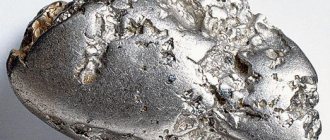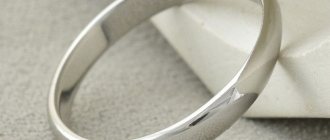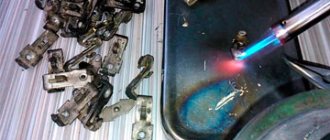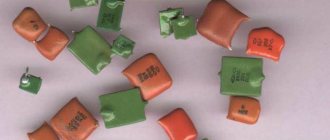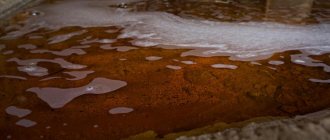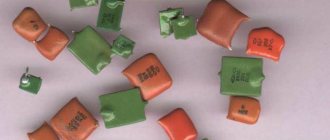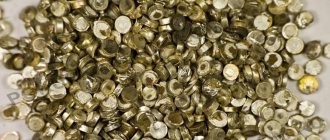The list of precious metals (PM) is very modest - only 8 items , but their scope of application covers almost all industries related to the manufacture of products for civil and military purposes.
Let's talk about why exactly precious metals are found in various devices and radio components, and, accordingly, where secondary precious metals can be obtained from.
The role of precious metals in devices
Precious metals are endowed with a whole range of unique physical and chemical qualities:
- almost absolute chemical inertness;
- excellent electrical conductivity;
- high reflective ability;
- catalytic properties.
Microscopic amounts of precious metals as alloying additives in alloys with other metals can change the technical and operational qualities of the material.
Among these qualities:
- hardness;
- foundry properties;
- ductility;
- electrical conductivity;
- heat resistance.
Thus, they achieve high technological effectiveness of processing products during their manufacture and the required indicators of strength and wear resistance during operation, superior to the properties of analogues made from traditional structural materials.
In particular, when used in radio components, relays, connectors, transistors and microcircuits, precious metals are superior to aluminum in heat resistance (aluminum has a low melting point and is also prone to corrosion) and copper in electrical conductivity.
How to choose the right place to search
Where can you find deposits? Before you start searching, find out where gold was mined and check them. Old mines, rivers and streams are suitable. Studying geological data and remembering the differences between important minerals - granite, slate and gneiss, quartz and feldspar - will help. They are almost always present in most places where aurum can be found.
Beginners should not try to find out how professionals search for such points - an independent search without knowledge and experience will most likely end in nothing.
Best place to mine
Of course, large deposits have already been explored by industrial enterprises, but gold can be found in areas that are of no value to holdings. Despite their small size, the content of Au and gold nuggets there is high, so they can be successfully mined.
Rich places in Russia
The forests of Siberia are considered a region rich in gold, where active study of soils and extraction of the resource is currently taking place. There a person can find a nugget by accident and not even realize it. The list also includes the Amur Region, Yakutia, Kolyma, and Krasnoyarsk Territory. Large mines are located in Norilsk.
You need to understand that all the places about which there is information in the public domain have long been occupied by industrial enterprises.
Classification of products by DM content
DM are not used as independent ornamental or structural materials for the manufacture of jewelry or products for technical purposes due to a combination of a number of causal factors:
- pure precious metals are either too soft (gold, silver) or very fragile (iridium, osmium);
- for many works related to the processing of products, DM do not have a certain manufacturability, in particular due to high hardness or high melting point (ruthenium, osmium);
- the high cost of precious metals proportionally increases the cost of finished products.
You can learn more about the price of scrap precious metals here.
Based on the Law of the Russian Federation “On Precious Metals” No. 41-FZ dated March 26, 1998 and in accordance with GOST R 52793-2007 “Precious Metals”, industrial products and jewelry made from DM alloys are considered as products made from precious metals, with the requirement to indicate the types and quantities of metals.
For the same reason, enterprises are required to dispose of devices containing precious metals in a special way . We talked about this procedure in more detail here.
In accordance with the established gradation in relation to products containing DM, depending on the quantitative content of precious metals, two groups of products :
- Products in which precious metals make up the main portion of the material , to which an alloy of two or more chemical elements is added to impart the required performance qualities. The main components of jewelry alloys are gold, silver, platinum and palladium. Information about the DM content in products of this group is contained in a sample indicating the percentage of the main precious metal content in the manufacturing material. For example, if we consider the percentage composition of the popular 585 gold alloy, then it contains 58.5% pure Au. The rest comes from the ligature.
- Products in which DM are present in local areas in the form of solders, coatings, surfacing, sputtering, etc. The scale here is completely different. This group includes industrial products for technical purposes , the total content of precious metals in which can be a fraction of a percent of the weight of the product. For example, the CHO60-36/56X18R-2 socket, weighing 22 grams, contains 0.3558 g of gold and 0.00216 g of silver, and in the 1A106V germanium diode there is only 0.0019 g of gold (with a diode weight of 0.6 g).
The list of products in this group includes products from the electronic and radio engineering industries, parts of household appliances, computers and other electronics. Precious metals in technology are conventionally divided as follows:
- refined precious metals intended for the manufacture of semi-finished products;
- basic and intermediate alloys/ligatures used for the manufacture of semi-finished products;
- solder alloys of precious metals, commonly called solders, used to connect individual parts/elements of a product by soldering.
To determine the presence of precious metals in a particular product, read detailed articles about where it is contained:
- gold;
- silver;
- platinum;
- palladium.
Where to look for radio components with precious metals - start with collectors
Many useful articles on the Internet indicate various sources where you can find some Soviet electronics. But for some reason, rarely does anyone point out the large number of collectors in our country who collect various old dilapidated Soviet equipment.
It is from them that you can get extremely valuable military electronics, which contain a huge number of valuable rare earth metals, some samples of which are now more expensive than gold.
Collectors not only have their favorite “toys” that lie around the house and delight them with their appearance, but also their storage rooms often contain special-purpose Soviet-era electronics that are literally replete with riches.
◄ Back to news
Contents of radio engineering and electronics
Precious metals most fully comply with modern requirements for manufacturing materials:
- electrical connectors (connectors);
- plugs/plugs;
- sockets/sockets;
- contacts;
- other parts of instruments and equipment.
With the introduction of technologies for cladding, fusing or spraying thin layers of DM, reliability has significantly increased :
- radio equipment;
- electronic devices;
- measuring instruments.
Currently, the entire group of noble metals is involved in the industrial production of radio equipment, computers and telecommunications.
The use of precious metal in products creates the following advantages compared to traditional materials:
- the resistance of precious metals to oxidation and resistance to acids and alkalis ensures high cleanliness of conductive surfaces and contact parts of electronic devices over a long period of active use;
- resistance to electrical erosion and wear ;
- no welding of the upper layers of contacting surfaces;
- high mechanical wear resistance , in particular to abrasion;
- high electrical conductivity and improved thermophysical qualities;
- manufacturability in machining, stamping, plate rolling, pressure processing, spraying;
- good break-in of contacting surfaces during operation;
- comparable cost due to the minimum DM content with an increased trouble-free operating life.
Types of deposits
Territories where gold lies on a scale sufficient for industrial mining are rare. Such places are called deposits. Also, a small amount of Au is found in deposits, placers, and ores.
Bedrock or ore deposits
Primary (primary, ore) accumulations appear in the mountains:
- In the deep layers of the planet, under the influence of high temperatures and strong pressure, the combination of chemical elements forms solutions of gold and quartz.
- Then the hot compounds move upward along cracks in the crust.
- Closer to the atmosphere, temperature and pressure drop, the shape of the aurum is destroyed, and the quartz crystallizes.
- The output is ore interspersed with gold. As a result of temperature changes, weathering, precipitation, and the actions of microorganisms and plants, the metal is gradually released.
To read: TOP 3 reasons why the skin on the finger under a gold ring turns black + ways to remove marks
Colluvial placer
Occurs on the surface during the destruction of primary gold deposits. It is also called secondary and is considered the least profitable for extraction.
Eluvial deposits
It is transported by water flows along river beds, and since aurum is one of the densest and heaviest metals, the metal settles and accumulates in suitable places. Placer gold can be found in the watersheds of major waterways in the form of debris and sand.
Residual deposits
These are Au grains formed as a result of weathering of a gold-bearing vein and located in close proximity to it.
Bottom sediments
The bottom of reservoirs consists of sedimentary formations - stones, sand, gravel, clay, lying on bedrock. As these materials are washed away from rocky terrain by large rainfall streams, depressions are formed in the riverbeds. Over time, the precious metal enters the water and settles in a pocket along with other masses, accumulates and creates bottom deposits.
Terrace deposits
Sometimes a river, having cut through the ground, goes down, and the old bottom remains above the water level. This is called a terrace. It can be directly above the channel or located at a distance from it. The deposits remain on it.
Most common types of equipment
The high cost of precious metals and the possibility of their return to circulation after recycling of products containing scrap precious metals form special attention to the recycling of technical products that contain gold, platinum and other precious metals.
Devices containing precious metals are divided into conventional classes , of which the following stand out due to their variety of assortments.
Appliances
Precious metals are found mainly in old household appliances produced back in Soviet times.
The most “rich” in precious metals:
- TVs;
- tape recorders;
- refrigerators;
- washing machines;
- computers;
- calculators;
- telephones;
- air conditioners.
Precious metals are found in:
- solders and contacts;
- processors and sockets;
- capacitors and transistors of the listed equipment.
Office equipment
Office equipment includes:
- various telephone sets and switches;
- intercoms;
- teletypes and faxes;
- computers;
- duplicating equipment;
- typewriters.
DM - gold, silver, platinum and palladium - are contained in:
- server processors;
- microcircuits;
- drives and controllers;
- motherboards;
- numerous connectors.
Radio components and microcircuits
Precious metals are found in almost all radio components and microcircuits, for example:
- in connectors and capacitors;
- in semiconductor devices such as optocouplers, zener diodes, diodes, thyristors;
- in transistors and radio tubes.
More information about the content of precious metals in radio components can be found here.
Equipment
Industrial equipment is represented by a wide range of machine tools. To control their operation automation cabinets , control panels and similar devices equipped with electronic units, processors, and software devices containing precious metals are used.
Motor transport
You can find quite a lot of devices containing precious metals in your car. These are sensors and switches, relays and catalysts.
Along with gold and silver used in relays and sensors, platinum, palladium and rhodium are used in automotive catalysts.
A separate article on our website is devoted to the content of radio components in cars.
Measuring equipment
There are quite a lot of measuring instruments - analog, digital, recording and others. The most common are ammeters and voltmeters, temperature sensors and instruments used in vehicles.
Each of them contains DMs, used by analogy with products of the classes discussed above.
Computers
Unlike calculators, Soviet computers contain a larger number of green KM capacitors, as well as yellow K10-17 capacitors, that is, when disassembling Soviet-style computer equipment you can provide yourself with a very tempting amount of money. A nice addition is a number of plastic chips, the internal filling of which contains gold.
Methods for separating precious metals from devices and equipment
Precious metals are separated from devices using chemical reagents .
The most common technologies are amalgamation and leaching .
Both methods require utmost compliance with safety regulations, since work is carried out with dangerous chemicals such as mercury, nitric and sulfuric acids.
Step-by-step instructions for refining precious metals are provided in other articles on our website.
Extraction technologies
There are fewer deposits and they are being depleted. Therefore, the ability to separate gold from ore is especially valued. Here is a list of the best techniques:
- amalgamation,
- heap leaching,
- etching.
Methods for extracting gold from river beds
The sifting and washing method involves passing river sand through a sieve, tray or burlap by hand. Only Au particles larger than a grain of sand remain in the dish.
Mechanisms - dredgers, pumps, screens - dig the mass from the bottom, deliver it to the shore and quickly process it, sifting out the excess. At the same time, the amount of manual labor and the time spent on it are reduced.


